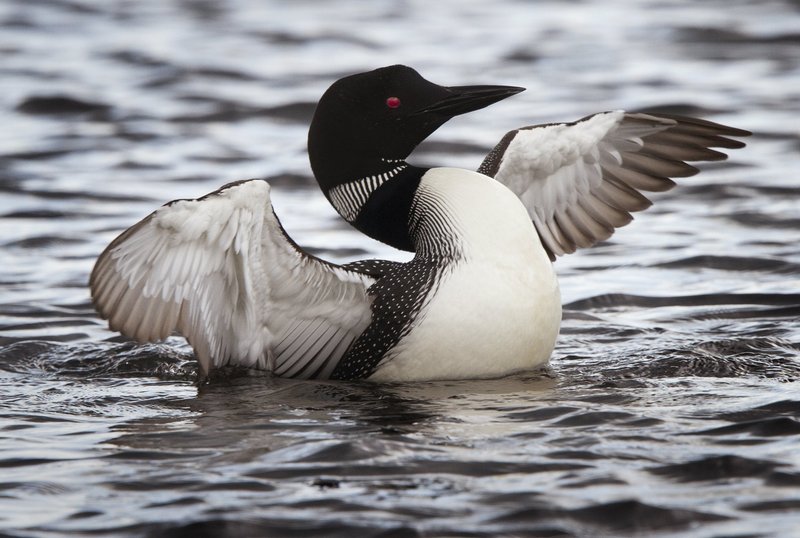Loons stricken with lead poisoning die slowly and painfully. It’s no surprise that those who have seen it firsthand recognize the tragedy in what is a wholly preventable death.
The culprits are lead sinkers and jigs used in fishing, picked up from the bottom of a pond or lake as the loons dive for pebbles that aid digestion. When poisoned, loons suffer from painful stomach contractions and become weak. They uncharacteristically swim to the shore, where they struggle for breath before dying.
Sometimes, the sick birds are found and brought to clinics like the Avian Haven, a bird rehabilitation center in Freedom.
“By the time they’re sick enough to beach themselves and be captured, it’s usually too late,” said Diane Winn, the clinic’s co-director. “It’s painful to watch, and I’m sure it’s painful to experience.”
This year, the Legislature passed a law that marks an important step in lowering the prevalence of lead poisoning, the No. 1 cause of loon deaths in Maine, according to Mark Pokras, a Tufts University professor who has studied loons since 1987.
But debate over the bill also highlighted the mounting dangers facing loons, as well as their place as an indicator of the health of Maine’s lakes and ponds. As such, loons can tell us a lot about the impact of development and shoreland management.
Opponents of the law, which will ban the sale and use of lead sinkers and jigs by 2017, argue that the science is unclear on the cause of the deaths, and that regardless, the relatively few loon deaths do not warrant a ban. They say alternative products are expensive, so much so that the cost will harm the recreational fishing industry.
However, a 2013 report by the Maine Audubon Society, using Pokras’ results, found that out of 352 dead adult loons examined, 97 were killed by lead poisoning from fishing gear. In a population of around 3,000, 97 deaths may not seem like much, but those 97 are easily avoidable.
As for the expense of alternatives, the opponents are right, for now.
But as more and more states ban lead gear, the price will come down.
Washington state, New Hampshire, New York, Vermont and Massachusetts all have at least partial bans; the U.S. Fish and Wildlife Service has bans in place at two national wildlife refuges and Yellowstone National Park.
The price of lead-free weights has already come down in the past few years as a result of improved technology and rising demand.
The opponents are correct, however, on the other, formidable dangers facing loons. Watercraft activity can injure the birds and disrupt their nesting areas, though with education, signage and law enforcement, that seems like a problem that is relatively easily addressed.
Habitat loss and lower water quality, both caused by shoreline development, are more challenging, and require diligent code enforcement in addition to a constant review of policies.
Keeping an eye on loons — who, through their place at the top of the food chain, are an indicator of the health in general of the state’s natural resources — will help let us know how we’re doing.
Copy the Story Link
Send questions/comments to the editors.



Success. Please wait for the page to reload. If the page does not reload within 5 seconds, please refresh the page.
Enter your email and password to access comments.
Hi, to comment on stories you must . This profile is in addition to your subscription and website login.
Already have a commenting profile? .
Invalid username/password.
Please check your email to confirm and complete your registration.
Only subscribers are eligible to post comments. Please subscribe or login first for digital access. Here’s why.
Use the form below to reset your password. When you've submitted your account email, we will send an email with a reset code.